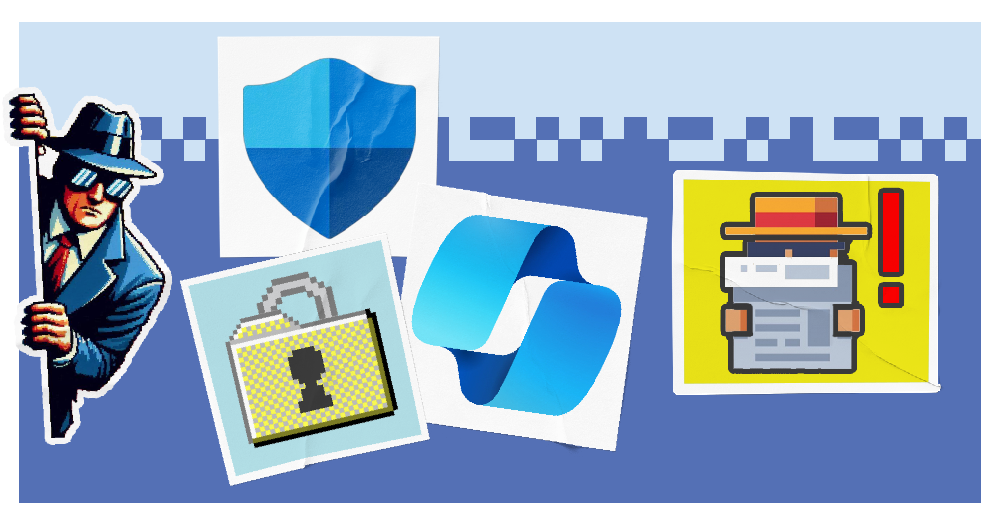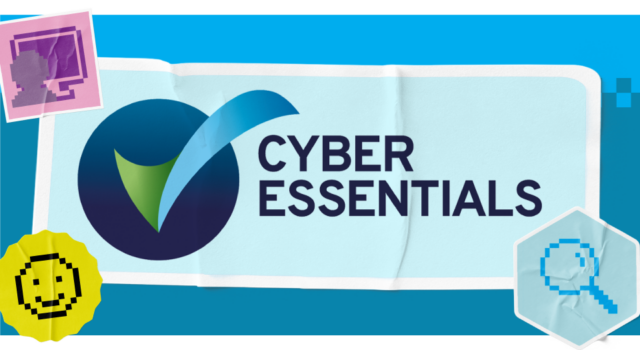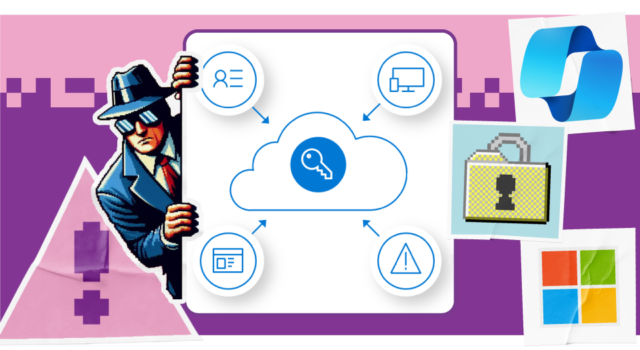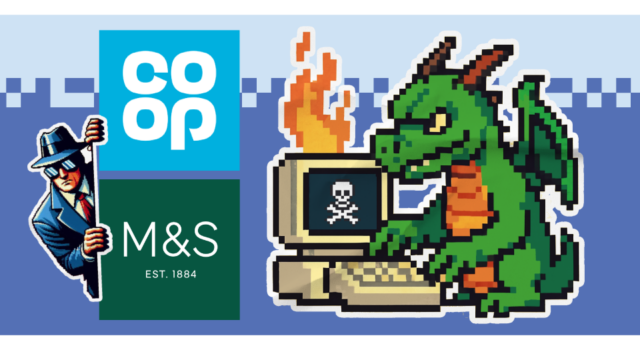The cyber threat level facing your business has never been higher. According to the Cyber Security Breaches Survey 2024, 50% of businesses experienced a cyber security breach or attack in the last year. This was up from 32% the year before.
Every cyber attack your business is targeted by brings the risk of unexpected downtime, financial loss, data theft, reputational damage and non-compliance fines. These are costs no business wants to incur – and many can’t afford.
This is why 24/7 security operations centres (SOCs) are becoming increasingly indispensable. They provide continuous monitoring and response capabilities, ensuring that potential threats are detected before they can cause significant damage. In an era where data breaches and cyber attacks are increasingly sophisticated, the ability to maintain constant vigilance is paramount.
In this guide, we explore everything that goes into a 24/7 SOC that can effectively protect your business.
The anatomy of a SOC_
A robust SOC needs the right resources, tools and approach. Let’s dive into what makes up a high-performing, always-on SOC.
People_
A well-structured SOC comprises a diverse team of cyber security professionals, each playing a crucial role in maintaining continuous security. Roles they might fulfil include:
- Security Analysts: These are the frontline defenders, responsible for monitoring security alerts, triaging incidents and escalating complex issues. In many cases, you may have different tiers of analysts. This allows a clear prioritisation of risks from initial investigation to in-depth analysis.
- Security Engineers: These individuals will build and maintain the SOC’s technology infrastructure. They design, implement and manage the SIEM, EDR and other security tools.
- Incident Responders: When a security incident is confirmed, these specialists take charge. They lead the containment, eradication and recovery efforts, working swiftly to minimise the impact of a breach and restore normal operations. Their expertise is critical in ensuring the SOC can effectively handle and resolve security incidents.
- Threat Hunters: Threat hunters actively search for hidden or advanced threats that might evade automated security controls. They leverage threat intelligence and their deep understanding of attacker tactics, techniques and procedures (TTPs) to identify and neutralise potential risks before they escalate.
As you may expect, these roles require specific expertise. This means finding people with the right skills and experience. It also means investing in regular training to evolve with the changing threat landscape.
Processes_
Every SOC needs to encompass core processes to ensure threats are appropriately identified, managed and neutralised. These include:
- Threat detection: This is the initial stage, involving the continuous monitoring of security logs, network traffic and system behaviour to identify potential threats. The SOC may utilise various tools and techniques to detect anomalies that could signal a security incident.
- Incident analysis: Once a potential threat is detected, analysts within the SOC must investigate to determine its validity, scope and severity. This involves correlating data from multiple sources, analysing event logs, and understanding the potential impact.
- Incident response: If an event is confirmed as a security incident, a predefined incident response plan is activated. This process outlines the steps for containment, eradication, recovery and post-incident analysis, ensuring a swift and effective resolution.
- Reporting: Comprehensive reporting is crucial for understanding the organisation’s security posture and the effectiveness of the SOC. This includes regular reports on detected threats, incident trends, response activities and KPIs.
- Proactive vulnerability assessments: Regular vulnerability assessments identify weaknesses in systems and applications, allowing the organisation to remediate them before they can be exploited by attackers.
- Evolving threats: The cyber threat landscape is always shifting, with new attack techniques and vectors emerging frequently. A successful SOC must have processes in place to continuously monitor and understand these emerging threats. This includes tracking security news, research publications and threat intelligence reports to ensure the team respond to the latest risks.
To ensure consistency and efficiency in a 24/7 environment, standardised operating procedures are essential, providing instructions for standard tasks. Clear incident escalation protocols are also vital for ensuring that critical issues receive the appropriate level of attention.
Technology_
A SOC may have many tools and system at its disposal, making it easier to detect and respond to threats. Core tools include:
- SIEM (Security Information and Event Management): Acting as the core of the SOC, the SIEM aggregates and analyses security logs and event data from various sources across the IT environment. It provides real-time correlation, alerting and a unified view of potential security threats.
- EDR (Endpoint Detection and Response): EDR solutions provide deep visibility into endpoint activity, enabling the detection of advanced threats, behavioural analysis and rapid response capabilities at the individual device level.
- Threat Intelligence Platforms (TIPs): TIPs gather threat data from various sources, providing valuable context and insights into emerging threats, attacker tactics and vulnerabilities. This information empowers the SOC to proactively identify and mitigate potential risks.
- SOAR (Security Orchestration, Automation and Response): SOAR platforms automate repetitive security tasks, such as alert triage, enrichment and basic incident response actions. This enables analysts to focus on more complex and critical threats.
- Log management: Effective log management is foundational to a successful SOC Collecting, storing and normalising logs from various systems and security devices provides the raw data for threat detection and incident analysis. Robust correlation engines within the SIEM are then crucial for identifying meaningful patterns and anomalies within this vast sea of data.
Crucially, these technologies must seamlessly integrate. By sharing data and context, they provide a holistic view of the organisation’s security posture. For example, EDR might detect suspicious endpoint behaviour, which is then correlated with network anomalies identified by the SIEM, enriched with threat intelligence, and automatically responded to through SOAR.
Infrastructure_
The physical and logical infrastructure underpinning a 24/7 SOC needs to be resilient to support continuous operations. This includes:
- Redundancy and high availability: Given the critical nature of continuous security monitoring, redundancy in power, network connectivity and key hardware components is crucial. High availability ensures that the SOC remains operational even in the event of hardware failures or other disruptions, guaranteeing uninterrupted protection.
- Secure data storage and processing: The vast amounts of security data collected and analysed by the SOC require secure storage and processing environments. This includes implementing strong access controls, encryption and data retention policies to protect sensitive information and comply with relevant regulations.
- Network monitoring: Comprehensive network monitoring is essential for gaining visibility into all network traffic, identifying suspicious communication patterns and detecting potential intrusions. This includes monitoring internal network segments, internet gateways and cloud environments.
How does it become 24/7?
Building a SOC is one thing, but 24/7 SOCs require even greater resources.
Firstly, maintaining a fully staffed SOC 24/7 presents unique challenges. The need for round-the-clock coverage can lead to staffing shortages and burnout. Due to this, strategic shift scheduling is often used to minimise fatigue and maximise team effectiveness across all hours of operation. A collaborative environment where knowledge sharing and mutual support are encouraged is also key, reducing the burden on individual analysts.
Robust handoff procedures are crucial during shift changes to seamlessly transfer critical information, ongoing investigations, and pending tasks between analysts. This prevents gaps in monitoring and ensures consistent security oversight.
Secondly, you need to take steps to avoid alert fatigue, brought by a constant stream of data. Implementing effective alert triage processes, tuning security tools to reduce noise and prioritising analyst well-being through workload management, breaks and supportive resources are essential for maintaining a high-performing SOC 24/7.
Defining clear SLAs for response times, resolution targets and reporting frequency can be useful important for setting expectations and measuring the effectiveness of the SOC long-term. In many cases, automated tools and even AI can support continuous monitoring, reducing the burden on staff without ever letting the ball drop, making the 24/7 aspect easier.
Finally, the SOC needs to have robust disaster recovery and business continuity plans in place. These plans outline procedures to ensure the continued operation of the SOC’s critical functions in the event of disruptions such as power outages, natural disasters or cyber attacks targeting the SOC itself – so there are never gaps in provision.
Challenges and best practices for running a 24/7 SOC_
Running an efficient and effective SOC 24/7 is not without its hurdles. Understanding these common challenges and implementing best practices is crucial for maximising its value and ensuring continuous security.
Common challenges_
- Talent shortage: The cyber security industry faces a global talent gap, making it difficult to recruit and retain qualified security analysts and engineers for round-the-clock operations.
- Burnout: The demanding nature of 24/7 operations and the constant pressure of dealing with security threats can lead to analyst burnout.
- Evolving threat landscape: Keeping pace with the rapidly changing tactics, techniques and procedures requires continuous learning and adaptation.
- Integration complexity: Integrating disparate security tools and platforms to achieve a unified view within the SOC 24/7 can be complex and challenging.
- Costs: Establishing and maintaining a 24/7 SOC involves significant financial investment. This includes costs associated with staffing, technology acquisition and maintenance, infrastructure (physical space, utilities), training and ongoing operational expenses.
- Lack of in-house expertise: Setting up a SOC 247 effectively requires a deep understanding of security technologies, processes and the specific needs of the organisation. Many organisations lack the internal expertise to properly define requirements, select the right tools and build the necessary infrastructure and workflows.
Fortunately, by following best practices, you can alleviate these challenges.
Best practices for 24/7 SOCs_
- Strategic staffing: In order to ensure you have the resource you need for your SOC, you need to be an appealing employer. Invest in competitive compensation, benefits, career development opportunities and a positive work environment to attract and retain skilled security professionals.
- Continuous skill development: Provide ongoing training and support for certifications to ensure your team remains up to date with the latest threats and technologies, allowing your SOC to evolve with the external landscape.
- Clear processes: Establish well-defined SOPs and incident response playbooks to ensure consistent and efficient handling of security events within the SOC.
- Regular performance monitoring: Track KPIs to identify areas for improvement and optimise the SOC 247’s operational efficiency.
- Continuous improvement: Implement a culture of continuous improvement by regularly reviewing processes, technologies, and team performance. Solicit feedback from analysts, conduct post-incident reviews, and stay informed about emerging threats and best practices to ensure your SOC remains effective and resilient over time.
- Automation: Automating repetitive tasks, such as alert enrichment, initial investigation and basic response actions, frees up analysts to focus on more complex threats, helping you to overcome resource issues.
- AI: AI algorithms can help identify subtle anomalies, detect advanced threats and improve the accuracy of threat detection, reducing false positives and enhancing the SOC’s ability to identify genuine risks. It can also save your team significant time.
Building vs. outsourcing a 24/7 SOC_
Given the challenges and resource requirements to build an 24/7 SOC, many organisations choose to outsource the task to a Managed Security Service Provider (MSSP).
The benefits of an outsourced SOC include:
- Lower initial investment: The upfront costs to your business are typically lower, as infrastructure and technology are typically provided by the MSSP.
- Lower running costs: By outsourcing your SOC, you won’t need to cover regular costs like staff overheads, subscriptions across multiple tools or maintenance. It’s just a set monthly service price.
- Access to specialised expertise: The MSSP should have its own team of experienced security professionals with diverse skill sets. This prevents you needing to recruit and retain your own resource, which can be extremely difficult in the current climate.
- Scalability: Easily scale security operations up or down based on changing needs, without requiring extensive costs. This makes it easier to adapt the SOC as your business evolves.
- 24/7 coverage: MSSPs typically have access to more tools and resources, making continuous monitoring and response easier to obtain. It protects your business, without the burden of doing it yourself, for peace of mind.
- Faster time to value: Outsourced SOCs can often be implemented more quickly than building an in-house SOC, as the tools, infrastructure and resource are already in place.
However, there are reasons why people might choose an in-house SOC. These include having greater control and customisation to your business needs, ensuring resource is dedicated exclusively to your business and being able to ensure more seamless interaction with the rest of your business.
Ultimately, the choice you make will depend on many factors, including your budget, internal resources, complexity of your requirements (including any compliance needs), long-term security strategy and your risk tolerance.
If you are considering outsourcing, it’s worth noting that MSSPs are offering increasingly tailorable SOC services. This includes SOCs aligned to your specific risk areas and business needs.
You can now even access hybrid models, combining elements of both in-house and outsourced capabilities. This allows you to get the security coverage you need, augmenting the skills of your existing IT team.
Ensuring your security defences are strong enough_
In today’s environment of increasing cyber attacks and threats, a 24/7 SOC is ideal for constant protection. This is crucial for any business who wants to keep its systems, data, IP, finances and reputation safe.
Whether you choose to leverage a 24/7 SOC or not, having inadequate cyber security provisions will no longer suffice. You need to ensure you have the right tools, processes and people in place to ward off rising threat levels.
Few businesses have the protection they need. If this applies to you, then you need to change things before it’s too late.
We created our Get to Secure video series to give businesses the basics of strong cyber security, explore the challenges and provide practical recommendations. Our experts offer insights across many core areas of cyber security, including SOC, AI risk and assessing vulnerabilities.
In short, it gives you everything you need to create a foundational cyber security strategy that keeps your organisation safe.




